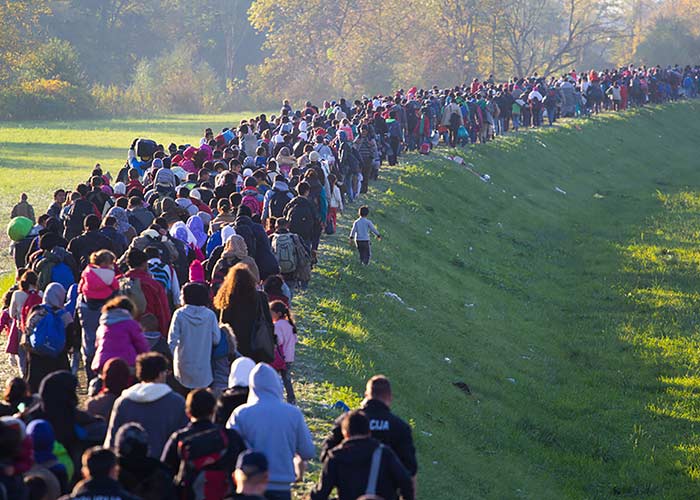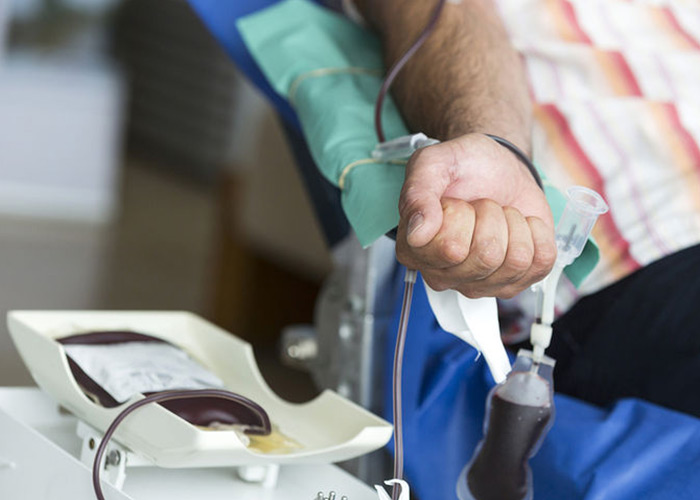In the year 2015, the General Assembly of the United Nations nominated 5th November as the World Tsunami Awareness Day. The day has been started to spread general awareness on tsunami amongst the people worldwide. The First World Tsunami Awareness Day was celebrated on 5th November, 2016 in order to commemorate the occasion by organizing events with Disaster Risk Reduction (DRR) Champions at AMCDRR (Asian Ministerial Conference for Disaster Risk Reduction).
A Conference was also organized (3-5 Nov), 2016 at Vigyan Bhawan, New Delhi by the Indian Government in collaboration with United Nations Office for Disaster Risk Reduction.
Even though Tsunamis are uncommon but these can impact many people especially those living in coastal areas. In the year 2004, the Indian Ocean earthquake-tsunami occurred that impacted approximately five million people in around 15 countries. Tsunami is a global problem and thus international cooperation is highly critical for better information and recognition to adopt risk reduction measures.
In the year 2017, the World Tsunami Awareness Day was concentrated on Target B of the Framework of Seven Campaign for Disaster Risk Reduction. The campaign aims at minimizing the number of people affected by disasters worldwide.
World Tsunami Awareness Day 2019
World Tsunami Awareness Day 2019 will be celebrated all over the world on 5th of November, Tuesday.
History of World Tsunami Day
The word “tsunami” gets its name from the Japanese “tsu” means harbor and “nami” means wave. A tsunami is a chain of huge waves created by disturbance created underwater. These waves are normally associated with earthquakes taking place under or around the ocean.
Though tsunami is comparatively an exceptional type of natural disaster, but it causes destruction in several nations around the world. Tsunamis pose a severe threat to the world and it could even obstruct the accomplishment of sustainable growth. The Sendai Framework for the Reduction of Disaster Risk was adopted at the 3rd WCDRR (World Conference on Disaster Risk Reduction) held at the United Nations in March 2015.
At the conference held in Sendai, the Agenda for 2030 for Sustainable Development was also proposed. This influenced Japan along with many other countries to dedicate a specific day as the “World Tsunami Awareness Day” and the same was designated by the UN.
Fifth November was chosen as the World Tsunami Awareness Day in the honor of the famous Japanese tale of “Inamura-no-hi”, which means “burning of the rice sheaves”. During an earthquake in the year 1854, a farmer noticed the tide diminishing which is a sign of an approaching tsunami. In order to warn the villagers, he set his entire harvest on fire; the villagers, as a result, evacuated the village immediately and fled to higher ground. Later, he constructed an embankment to plant trees as a barrier against future tides.
What is Tsunami
Tsunamis are the large waves that approach crashing on the coasts due to the seafloor movement, majorly associated with landslides or earthquakes. Like many other natural disasters, it is difficult to predict tsunamis but it can be suggested that seismically active areas are more at risk.
Causes of Tsunamis
Tsunami waves are highly dangerous and generally look like strong walls of water. The strong waves can attack the seashore for hours, thereby destructing thousands of lives. There are several causes of Tsunami such as submarine landslides, Earthquake, Coastal rock falls, volcanic eruptions or Extraterrestrial Collision.
Actions should be taken
It is important to recognize the natural warning signs of Tsunami in order to take preventive measures. Since huge earthquakes may cause tsunamis, you must be able to feel the earth shaking severely, or constantly. Tsunami may also cause due to a swift fall in the level of the sea when the ocean recedes. If you see an abnormal disappearance of water or if you notice a wall of water approaching, realize it is tsunami.
Tsunami creates a thunderous “roaring” sound similar to that of an aircraft or train. If you sense any of these symptoms, don’t delay for formal evacuation orders; instead leave the low-lying coastal areas instantly. You must immediately run when the tsunami approaches.
Why is World Tsunami Awareness Day Celebrated?
World Tsunami Awareness Day is celebrated to create awareness amongst people about the risks associated with the tsunami and the preventive measures to be taken when a tsunami approaches. Since the natural disasters don’t recognize borders, so the United Nations suggested 5th November as the World Tsunami Awareness Day and appealed for global cooperation in increasing prevention efforts and public awareness.
Though tsunamis are rare, its devastating impact can cost many lives. The destructive tsunamis of the years 2004 and 2011 have proved to the world how fatal these natural calamities can be. This has also brought to the notice that most of the people are unaware of the early signals of the tsunami and the preventive actions to be taken when the tsunami occurs or waves strike.
World Tsunami Awareness Day helps in improving our knowledge and awareness of tsunamis, and how should we react if stuck in any such situation. Several conferences, debates, seminars, quiz etc are organized at national and international levels to make people aware of the tsunami risk.
The national government should take every step to guide the people timely and appropriately in the event of tsunamis. Early warning signals can save several lives. They should be evacuated to safe places and should be supplied with necessary items such as food, water, clothes, etc.
Even though huge buildings and mechanical and scientific innovations can delay tsunamis but such innovations do not protect people completely from tsunamis. During the 2011 tsunami, many evacuation centers were constructed 20 meters above the sea level, at Japanese city Minamisanriku, Japan to prevent disasters. These centers were poorly swamped and huge population was washed away. Thus, the international bodies have to be more cautious and find out better preventive ways.
How is World Tsunami Awareness Day Celebrated?
In December 2015, General Assembly of the United Nations nominated 5th November as the World Tsunami Awareness Day. The Assembly appealed to all nations, civil society and international bodies to celebrate the day every year. The day is observed in order to increase the awareness about the tsunami and share inventive approaches to reduce the risk.
The World Tsunami Awareness Day concentrates on educating and evacuation drills. The day is celebrated on 5th November every year with the purpose of defending the valuable lives of everyone around the world. World Tsunami Awareness Day raises awareness regarding precautionary measures to be taken against tsunami. The good practices and common sense as shown in the story of “Inamura-no-hi” must be applied by everyone to prevent the valuable lives of the people.
World Tsunami Awareness Day is used as the platform for making people aware of the signs of a tsunami. It is important to map the seabed of the oceans to recognize the cause of tsunami. International efforts are important to map oceans for discovering riskier seismic areas and areas with the probability of landslide. It is important that government of the member countries of the UN come together and share cooperation to map the oceans.
This will help in better educating people about the preventive measures to be taken in the event of the tsunami. World Tsunami Awareness Day creates awareness amongst everyone especially the population living in coastal areas that they moment they sense tsunami, they shouldn’t wait for official warnings, instead, run.
Prevention and education also involve educating people to react as fast as they can. People should also know the best locations to run to; it should be far from the seaside and at higher altitudes. Indicative panels should be fixed at all the seashore to guide people about the safe regions during the tsunami.
World Conference on Disaster Risk Reduction (WCDRR)
According to the World Conference on Disaster Risk Reduction (WCDRR), the most acceptable method to prevent people from the risk of tsunamis is to promptly distribute and share the essential information, through “early warnings.” Prevention is vital at the individual level too. People should be cautious while traveling to the danger zones and they should recognize how to react.
At community or social level, we should warn people who are traveling to the risky coastal zones or engaging into activities like taking photographs or selfies, etc. The Sendai Framework has incorporated new fundamentals including investing in “Build Back Better” and DRR. The Sendai Framework also suggests that the use of indigenous, traditional and local awareness and practices are equally important. Japan and the UN believe that there will be a considerable reduction in the number of tsunami-affected victims by increasing such awareness through the World Tsunami Awareness Day.
World Tsunami Awareness Day Theme
- The theme for world tsunami Awareness Day 2017 was “Reduce the Number of Affected People”.
- The theme for World Tsunami Awareness Day 2016 was “Theme: Effective Education and Evacuation Drills”.
Conclusion
The Indian Ocean tsunami occurred in 2004 caused the United Nation to implement the tsunami warning signals and systems globally. The real-time data from the bottom of the ocean pressure sensors and GPS installed at the offshore are assisting tsunami warning centers to cancel or issue alerts and warnings more rapidly and accurately. For a remote tsunami, real-time monitoring of the sea level and earthquake for confirming the occurrence of a destructive tsunami is critical. The immediate warning must be issued to the public in such cases. A local tsunami doesn’t allow sufficient time for the warning signals to be issued. In such situations, people must act wisely and respond immediately.
Though Tsunamis are unusual events, these can be awfully deadly. In the last 100 years, around 58 tsunamis have destructed approximately 260,000 lives which is an average of 4,600/disaster. This has surpassed all other natural calamities. The maximum number of deaths had occurred in December 2004 in the Indian Ocean tsunami. It caused approximately 227,000 deaths in 14 countries including India, Indonesia, Sri Lanka and Thailand being the hardest-hit.






